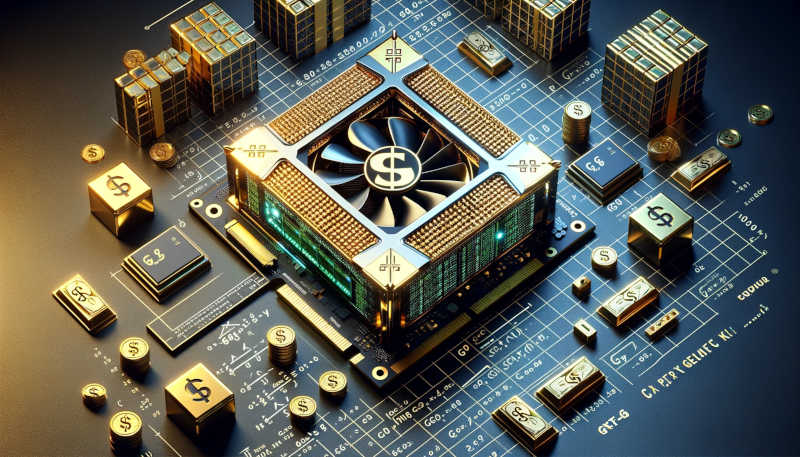The following post is by Wayne Joubert, the newest member of our consulting team. Wayne recently retired from his position as a Senior Computational Scientist at Oak Ridge National Laboratory. — John

Training large language models like GPT-4 costs many millions of dollars in server expenses. These costs are expected to trend to billions of dollars over the next few years [1]. One of the biggest computational expenses of LLM training is multiplying matrices. These are simple operations of the form C = AB. Matrix multiplies are common not only in AI model training but also many high performance computing applications from diverse science domains.
Eking out more speed from matrix multiplies could reduce AI model training costs by millions of dollars. More routinely, such improvements could reduce training runtime by hours on a single GPU-powered workstation or cut down cloud service provider expenses significantly.
What is less well-known is that matrix multiples run on graphics processing units (GPUs) that are typically used for model training have many exotic performance behaviors that can drastically reduce matrix multiply efficiency by a wide margin.
Two recent works [2], [3] examine these phenomena in considerable depth. Factors such as matrix size, alignment of data in memory, power throttling, math library versions, chip-level manufacturing variability, and even the values of the matrix entries can significantly affect performance. At the same time, much of this variability can be modeled by machine learning methods such as decision trees and random forests [2].
Use of these methods can be the first step toward implementing autotuning techniques to minimize costs. Using such methods or carefully applying rules of thumb for performance optimization can make a huge performance difference for matrix multiply-heavy GPU software.
Related posts
[1] What large models cost you—there is no free AI lunch
[2] Wayne Joubert, Eric Palmer and Verónica G. Melesse Vergara, “Matrix Multiply Performance of GPUs on Exascale-class HPE/Cray Systems,” Proceedings of the Cray User Group Meeting (CUG) 2022, https://www.osti.gov/biblio/2224210.
[3] P. Sinha, A. Guliani, R. Jain, B. Tran, M. D. Sinclair and S. Venkataraman, “Not All GPUs Are Created Equal: Characterizing Variability in Large-Scale, Accelerator-Rich Systems,” SC22: International Conference for High Performance Computing, Networking, Storage and Analysis, Dallas, TX, USA, 2022, pp. 01-15, doi: 10.1109/SC41404.2022.00070.
